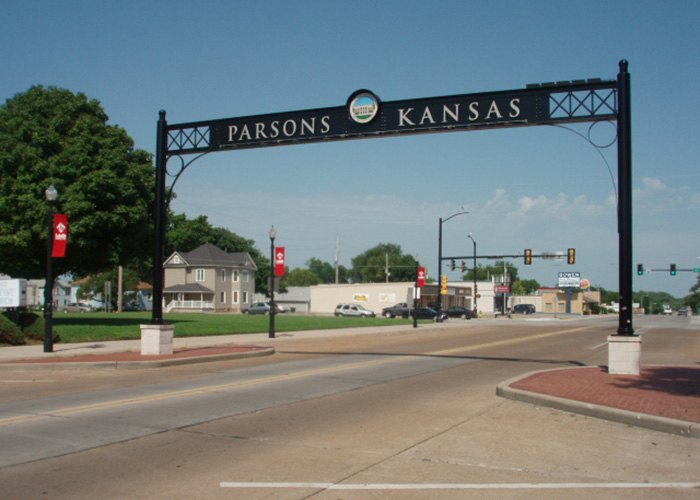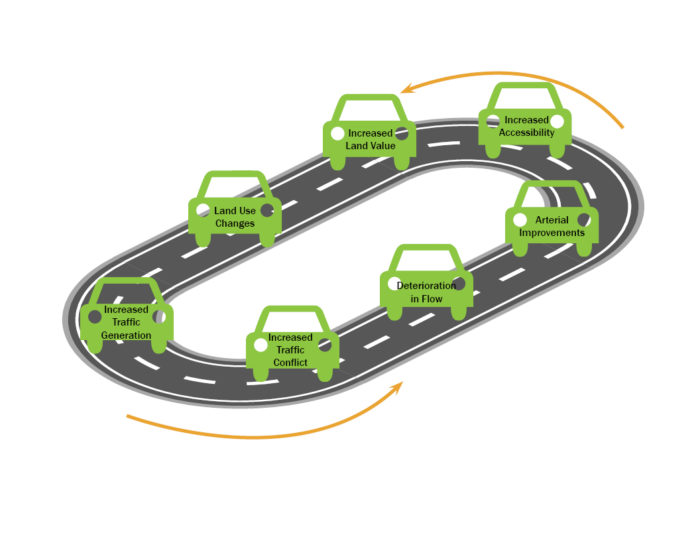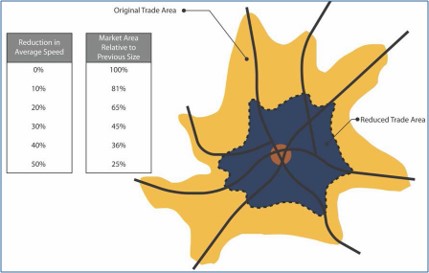Access Management = Economic Development
Posted on Thursday, March 15th, 2018 by Mike McKennaIn Project Strategies, Roadway, tagged in

Last week, I spoke at the TEAM conference on the link between access management and economic development. Below are some of the key points from my presentation.

For years, cities have experienced the same cycle.
- Land use changes
- So, traffic increases.
- Then, the number of incidents goes up.
- Flow is decreased.
- Arterial improvements are made.
- Accessibility increases.
- Then, land values go up.
But, as soon as this cycle is over, cities often find they’re right back on the racetrack ready to complete a second lap with the same steps.
One way to stay ahead is to create an access management plan. By using planning and design techniques, municipalities can create better access to public roadway systems for citizens and local businesses. This approach ensures traffic flows more smoothly and crashes are reduced.
While improved safety and efficiency are commonly discussed with access management plans, economic benefits are equally as prevalent. In fact, the Federal Highway Administration (FHWA) has cited a Texas study that indicated corridors with access control improvements experienced an 18 percent increase in property values after construction.
Access management also helps by reducing the number of connection points along a major arterial roadway. These can include driveways for homes or businesses, intersections, and pathways for pedestrians and bicyclists. It might seem counterintuitive at first, but too many access points equals a smaller trade area. Customers more regularly frequent businesses they can get to easily.
